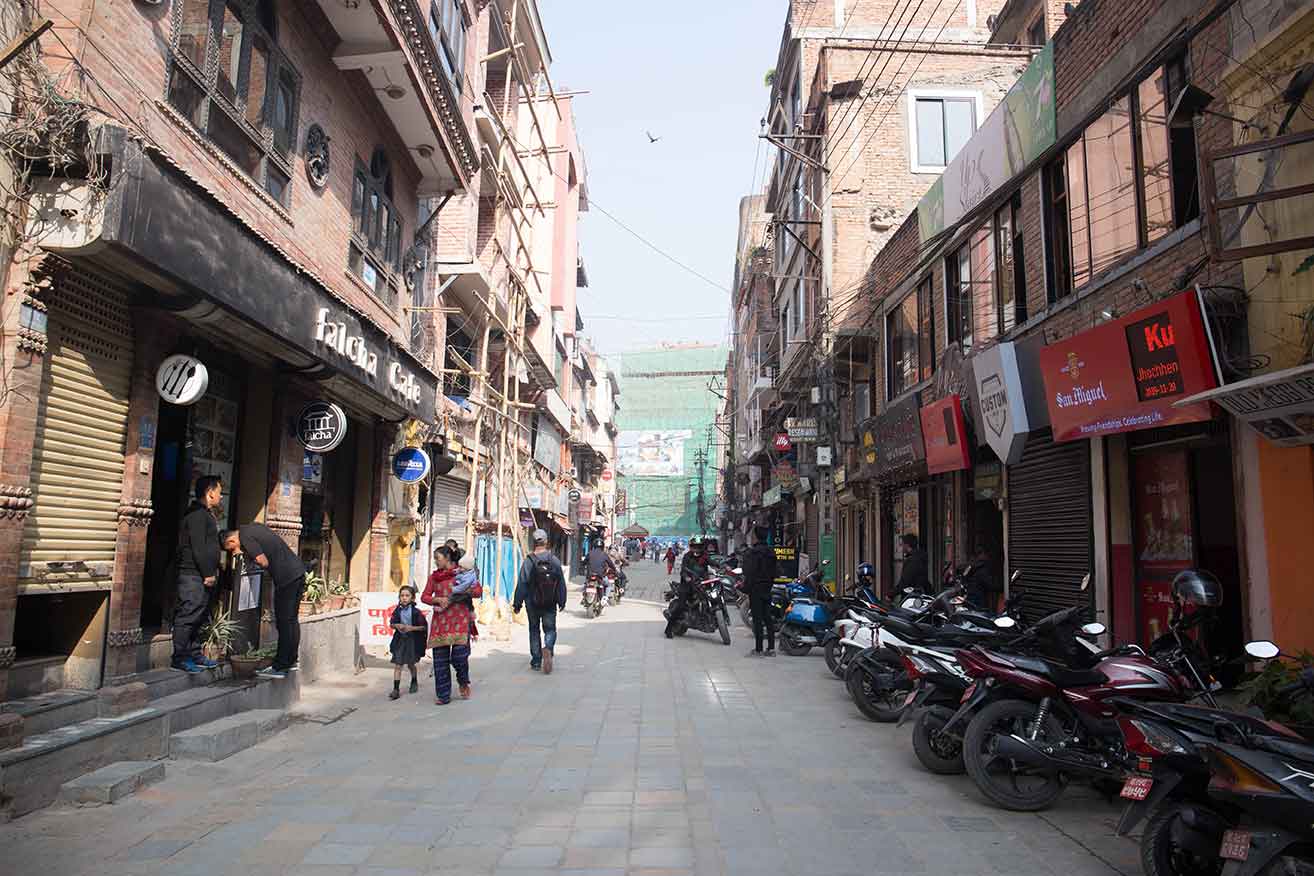Finding yourself in the proximity of Kathmandu’s early history in the caves of Chobhar
 Before Manjushree caves in Chobar were made open to the public in 2007, the caves in the outskirts of the valley – 9 km South East of Kathmandu – was visited by mischievous youngsters and eccentric adventure seekers alone, occasionally induced with Dutch courage. The stories that followed these cave escapades usually involved claustrophobia, getting lost and occasional rescue by the locals. The barely-a-meter-wide (in more spacious parts) cave that requires you to crawl, climb and descent almost the entire length of the route, was a little known destination visited only by a few with a quirky sense of adventure.
Before Manjushree caves in Chobar were made open to the public in 2007, the caves in the outskirts of the valley – 9 km South East of Kathmandu – was visited by mischievous youngsters and eccentric adventure seekers alone, occasionally induced with Dutch courage. The stories that followed these cave escapades usually involved claustrophobia, getting lost and occasional rescue by the locals. The barely-a-meter-wide (in more spacious parts) cave that requires you to crawl, climb and descent almost the entire length of the route, was a little known destination visited only by a few with a quirky sense of adventure.
Geologists claim that thirty thousand years ago, when the valley - which today is Kathmandu – was submerged. The deposits of soft limestone in the trenches of Chobhar hill began to gradually give way to the pressure on the walls within. In the next twelve thousand years, chunks of soil and limestone in the lower parts of Chobhar continued to rupture. Through the ages the lake subsided, plains emerged and trench transformed into a gorge, through which all rivers flowing into the valley from the Himalayas would pass. Amidst these geological changes, an intricate network of caves was also formed.
However, the popular belief surrounding the origins of the gorge transcends into the metaphysical—which by all means is more exciting than the aforementioned gradual process of geomorphology. It is believed that Manjushree, a divine saint descended from the Wutai Mountain in China and was travelling across the Himalayas, when he came across a huge lake. Aluminous, gigantic lotus glowing majestically in the middle of the lake caught the attention of the saint. Sensing a divine providence, Manjushree struck through the trench next to Chobhar hill, letting the water out, to reach the lotus. The lake turned into a valley, trench into a gorge and the point where the lotus was found was enshrined as Swayambhu.
The mystical allure of the gorge that ensued, inspired ancient inhabitants of Kathmandu to erect structures around the gorge—in an effort to establish the religious significance of the gorge for centuries to come. Jala Binayak Temple, considered to be the eldest of the four Ganesh shrines in the valley, located near the gorge, was built in 1602. Together with a fifteenth century Adinath Lokeshwore Temple and a Buddhist monastry on the summit of Chobhar, the religious sites of Chobhar are even today important religious destinations for the predominantly Hindu and Buddhist denizens of Kathmandu. In addition, Chobhar also boasts the first suspension bridge in Nepal, built by Chandra Shamsher over the gorge to join Kirtipur with Lalitpur, with the help of Scottish engineers.
 However, despite its geological, religious and historic significance, and its proximity to the valley, Chobhar’s recent history has been marred by being on the receiving end of extemporaneous industrialization. Only a decade ago, the locals of the community were fighting for the closure of a cement factory built in Chobhar. It took several years before the government and the shareholders heeded their calls. After three decades of exploiting the community’s land and river, destroying agriculture production and even the social fabric of the community, the factory was finally shutdown in 2002. It is said that Kathmandu was the only city with a cement factory in full production within four kilometers from the city. Ten years from the closure of the factory, Chobhar, which is also the only outlet for the rivers that pass through Kathmandu’s pollution, is still far from a serene destination like most sites that skirt the valley. For this very reason, the caves till recently had only been visited by wandering teenagers and odd adventure seekers.
However, despite its geological, religious and historic significance, and its proximity to the valley, Chobhar’s recent history has been marred by being on the receiving end of extemporaneous industrialization. Only a decade ago, the locals of the community were fighting for the closure of a cement factory built in Chobhar. It took several years before the government and the shareholders heeded their calls. After three decades of exploiting the community’s land and river, destroying agriculture production and even the social fabric of the community, the factory was finally shutdown in 2002. It is said that Kathmandu was the only city with a cement factory in full production within four kilometers from the city. Ten years from the closure of the factory, Chobhar, which is also the only outlet for the rivers that pass through Kathmandu’s pollution, is still far from a serene destination like most sites that skirt the valley. For this very reason, the caves till recently had only been visited by wandering teenagers and odd adventure seekers.
In the effort to reverse the damage, and restore its splendour, in 2007, with the initiation of the local community group—Jala Binayak Community Forest Users’ Group, the caves were established as a tourist destination with a park surrounding the five entrances of the cave. Stretching on the slope on the west side of the gorge, the park was established in an effort to promote eco-tourism around Chobhar village. These days, the park has become a popular destination for filmmakers looking for accessible sites to shoot movie song sequences and music videos. The park also provides sheds for family picnics and gatherings. And every now and then, adventure seekers allured by the heritage of Chobhar and the proximity to the very creation of the valley that shelters today’s metropolis, come to visit the caves.
The list of Cave Entrances:
Bagh Gupha
Naya Gupha
Barahi Gupha
Pareva Gupha
Chamero Gupha (on the other side)
Ticket Pricing:
Part Entrance Fee: Rs.20 (Nepali), Rs.50 (SAARC Visitors), Rs.100 (Other Nationalities)
Cave Entrance Fee per person (Includes a guide, headlight and park entrance fee):
Till Mahadev Pokhari (40.3m): Rs.100(Nepali), Rs.200(SAARC Visitors), Rs.500 (Other Nationalities)
Parewa Gupha & Barahi Gupha (86.4m and 100.95m): Rs, 200(Nepali), Rs.400(SAARC Citizens), Rs.1,000(Other Nationalities)
Bagh Gupha and Naya Gupha (140m and 128m): Rs.300 (Nepali), Rs.600 (SAARC Citizens), Rs.1,500(Other Nationalities)
*A group of at least five people
is needed











